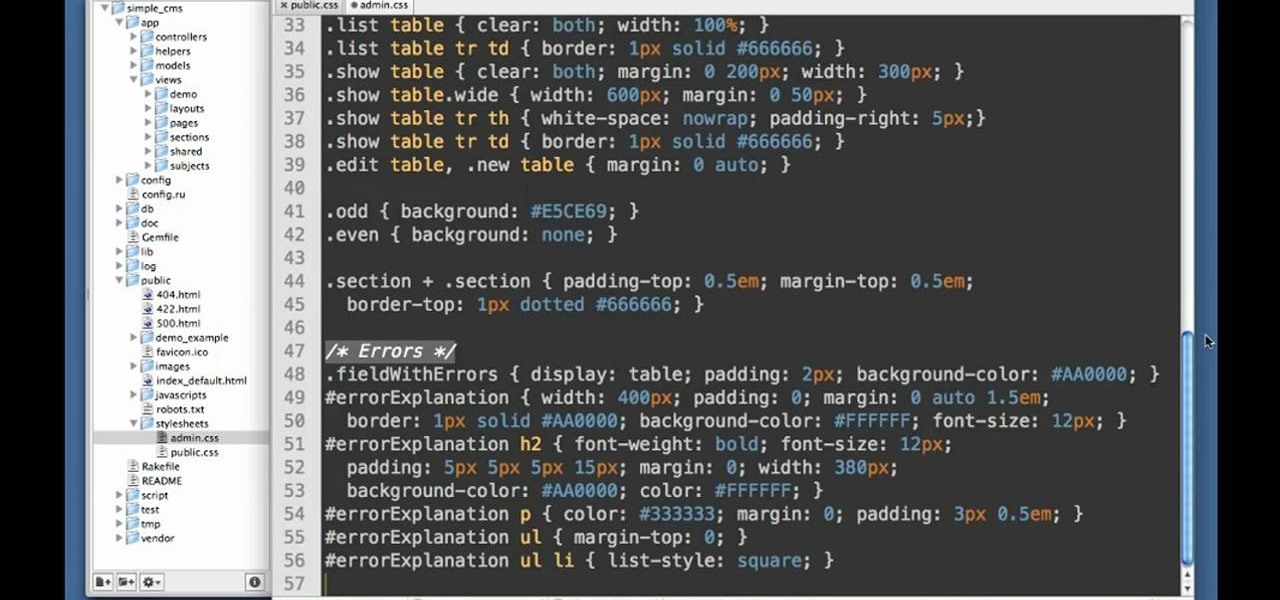Pulse of Information
Stay updated with the latest news and insights.
Rails Without the Drama: Simplifying Web Development
Unlock hassle-free web development with Rails! Discover simple tips and tricks to streamline your coding journey today.
Understanding MVC Architecture in Rails: A Simplified Guide
Understanding MVC Architecture in Rails is essential for anyone looking to develop web applications efficiently. The acronym MVC stands for Model, View, and Controller, which are the three main components that make up this architectural pattern. Models are responsible for managing the data, representing the business logic, and interacting with the database. They encapsulate the core functionality of the application and define the rules governing the data. Views, on the other hand, handle the presentation layer by displaying the data to the user and ensuring that the information is visually appealing and easy to understand.
The Controller acts as a mediator between the Model and the View. It receives user input, processes it (often by updating the Model), and then directs the app to render the appropriate View. This separation of concerns facilitates maintainability and scalability in a web application. To summarize the components of MVC Architecture:
- Model: Manages data and business logic.
- View: Presents data to the user.
- Controller: Handles user input and interactions.

Common Rails Pitfalls: How to Avoid Drama in Your Development Process
In the world of Ruby on Rails, developers often encounter common pitfalls that can lead to unexpected drama in the development process. One of the most significant issues is neglecting proper database migrations. Frequent changes to your models and associated migrations can result in a tangled mess of schema versions, making it difficult to rollback or understand your app's state. To avoid this, ensure that you thoroughly test each migration, and consider using tools like schema.rb to keep track of your database structure efficiently.
Another prevalent issue arises from the improper management of gems and dependencies. Adding too many gems without understanding their impact on performance can slow down your application and complicate upgrades. To sidestep these pitfalls, maintain a well-organized Gemfile and use a dependency management tool to help visualize compatibility. Regularly audit your gems to eliminate unused ones and ensure your application remains efficient and easy to maintain.
Is Ruby on Rails the Right Framework for Your Project?
Ruby on Rails (RoR) is a popular framework for web application development, known for its elegance and simplicity. It has a strong emphasis on convention over configuration, which allows developers to focus more on building features rather than wrestling with the framework. If your project demands rapid development, Ruby on Rails can be an excellent choice due to its use of built-in tools and libraries. Additionally, with its extensive community support, you can easily find resources, plugins, and gems that enhance the functionality of your application.
However, before committing to Ruby on Rails, it's essential to consider the specific requirements of your project. For instance, if you anticipate a large-scale application with heavy traffic, exploring other frameworks might be necessary, as RoR can sometimes struggle with performance under intense load. Furthermore, if your team's expertise lies elsewhere, such as in JavaScript frameworks or Python, diving into Ruby on Rails might result in a steeper learning curve. Ultimately, weigh the pros and cons carefully to determine if Ruby on Rails aligns with your project goals.